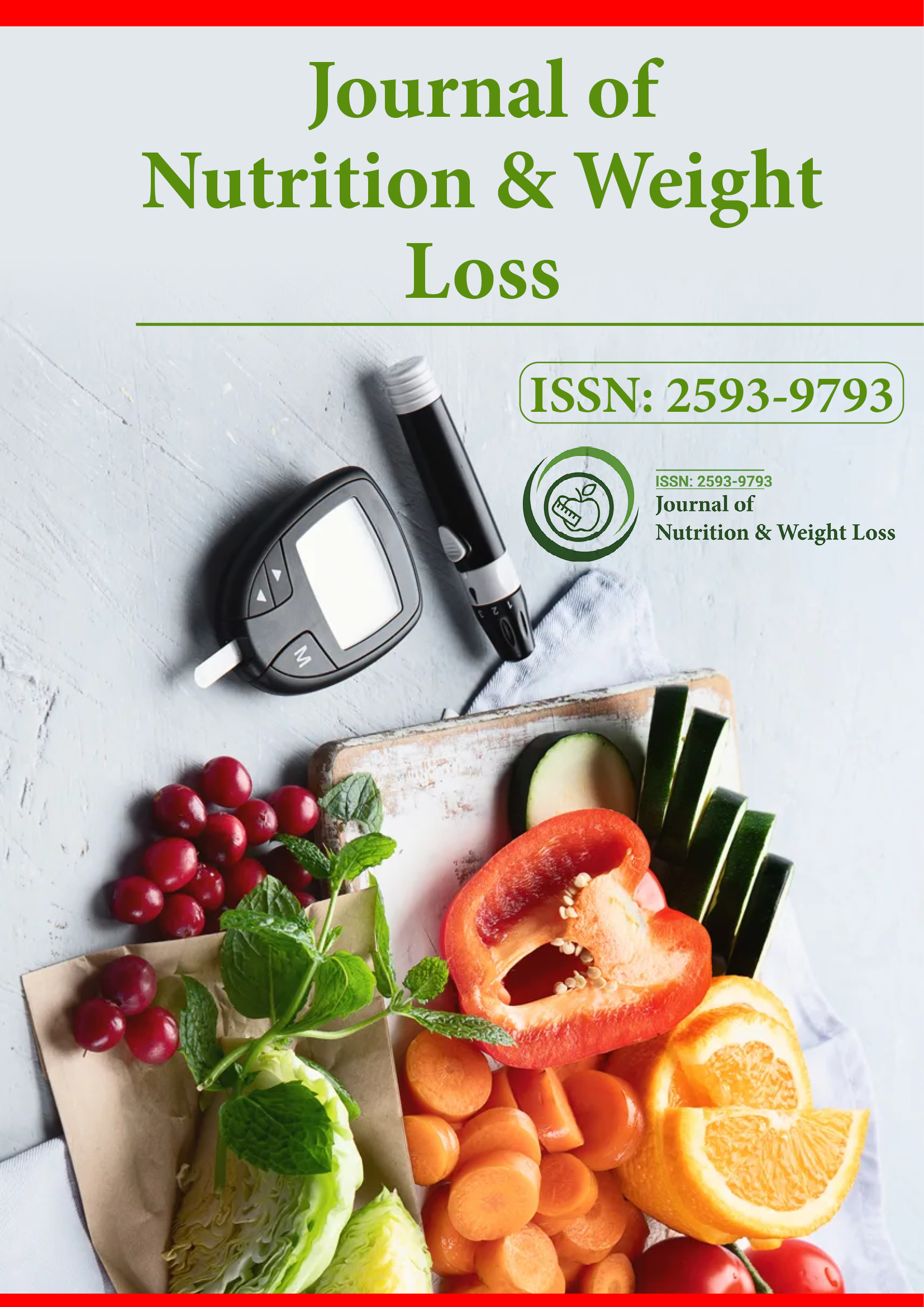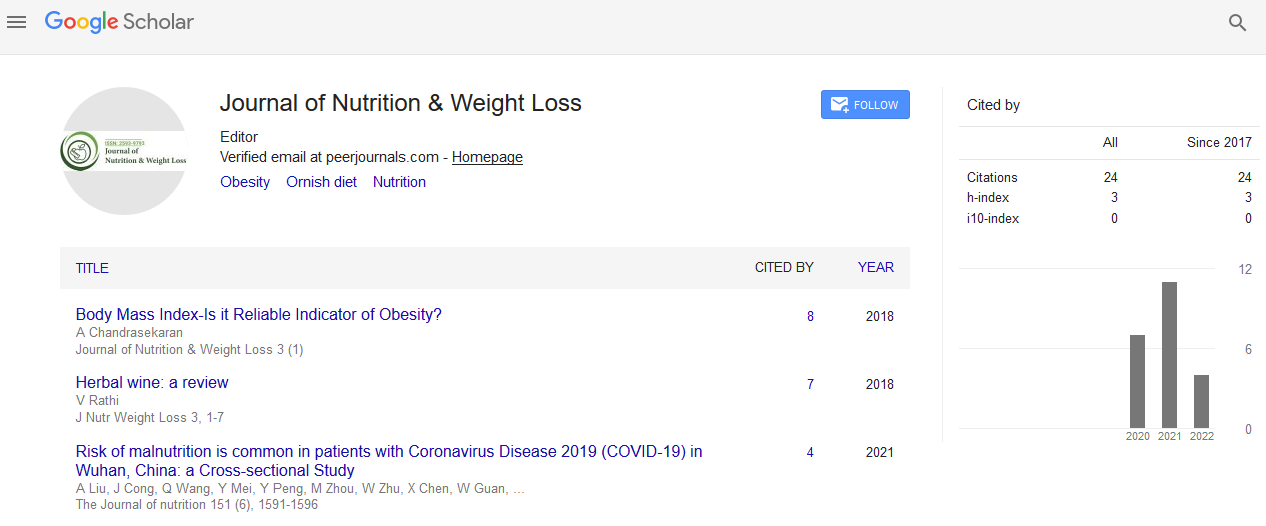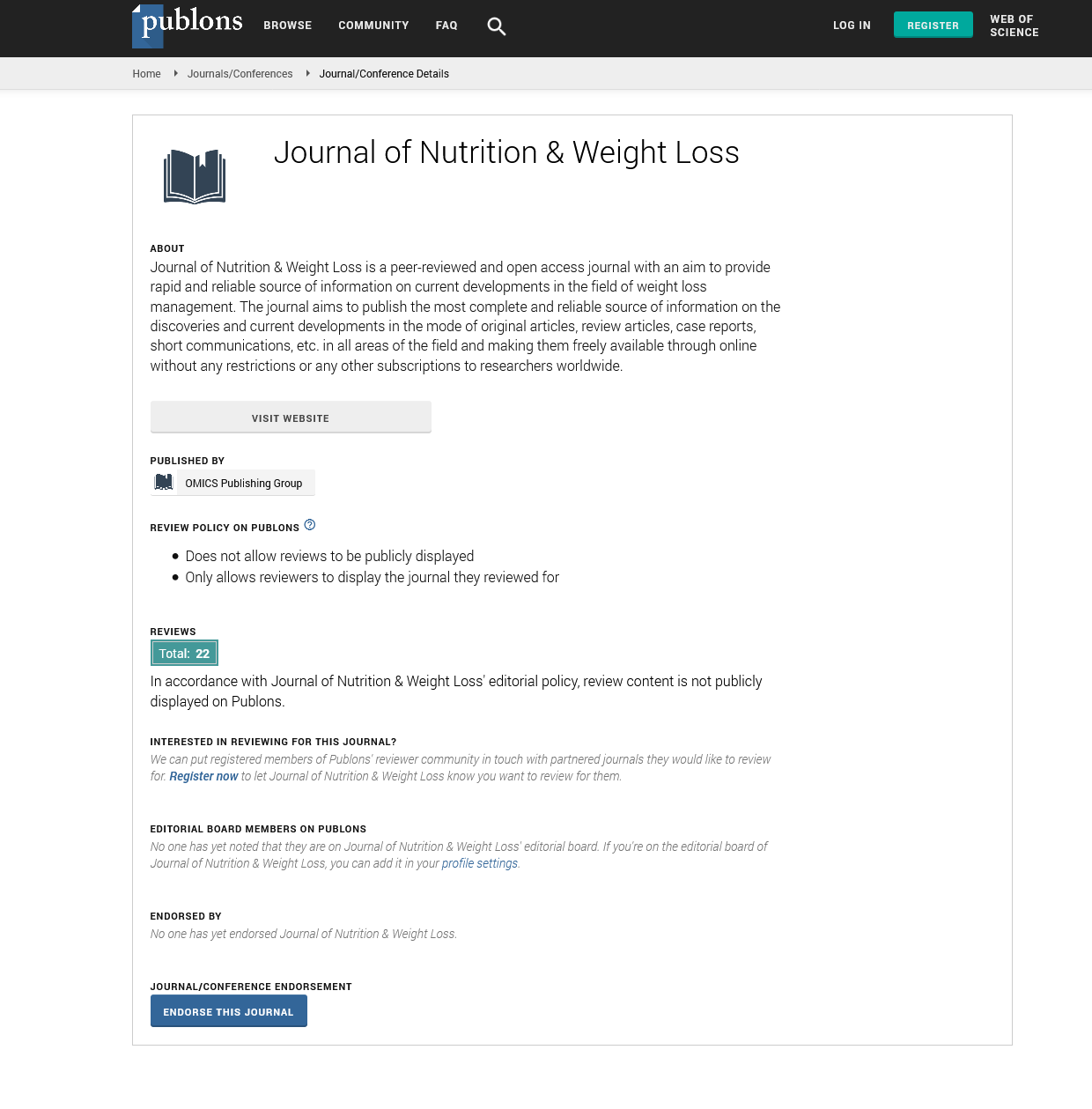Indexed In
- RefSeek
- Hamdard University
- EBSCO A-Z
- Publons
- Euro Pub
- Google Scholar
Useful Links
Share This Page
Journal Flyer

Open Access Journals
- Agri and Aquaculture
- Biochemistry
- Bioinformatics & Systems Biology
- Business & Management
- Chemistry
- Clinical Sciences
- Engineering
- Food & Nutrition
- General Science
- Genetics & Molecular Biology
- Immunology & Microbiology
- Medical Sciences
- Neuroscience & Psychology
- Nursing & Health Care
- Pharmaceutical Sciences
Opinion - (2023) Volume 8, Issue 1
Diet and Exercise for Weight Loss in Obese Persons with Bone Fragility
Ulku Mumtaz*Received: 21-Feb-2023, Manuscript No. JNWL-23-20966; Editor assigned: 24-Feb-2023, Pre QC No. JNWL-23-20966(PQ); Reviewed: 14-Mar-2023, QC No. JNWL-23-20966; Revised: 21-Mar-2023, Manuscript No. JNWL-23-20966(R); Published: 28-Mar-2023, DOI: 10.35248/2593-9793.23.8.164
Description
Low bone mass and increased bone fragility from osteoporosis increase the risk of fracture by causing decreased Bone Mineral Density (BMD) and damaged bone micro-architecture. Osteoporosis is caused by a variety of variables, such as age, gender, lifestyle, and illnesses. In the ventromedial region of the hypothalamus, close to the median eminence, is where the Accurate Nucleus of the Hypothalamus (ARH) is found. The ARH can therefore detect metabolic and hormonal signals from the peripheral blood circulation and integrate them with neural impulses because it is richly supplied by fenestrated capillaries.
This can decrease the migration of immune cells into the CNS tissue. S1p modulator medicines may have a wide range of side effects, including cardiac complications, elevated blood pressure, elevated liver enzymes, tiredness, retinal edema, leukopenia, elevated risk of infection and cancers. This is because S1PRs are extensively expressed in a variety of tissues and organs. Due to the high expression of S1PRs in the hypothalamus, Fingolimod probably affects hypothalamic functions like appetite and body weight. The S1PR1 is the most commonly affected of the five known subtypes of S1PRs by Fingolimod-phosphate. It can also bind to S1PR3, S1PR4, and S1PR5, though. Fingolimod key function in managing MS is to block lymphocyte egress from lymph nodes to the Central Nervous System (CNS) and downregulate S1P receptors on those cells.
More mechanical loading on the bones in obese persons is advantageous for bone mass. Moreover, there is a link between body fat % and BMI (kg/m2). Weight loss is detrimental to the health of the musculoskeletal system, has been linked to bone loss, and is a reliable indicator of osteoporosis. Increased hip bone loss was seen in older women who reduced weight. According to a different study, older men and women who lose weight tend to experience hip bone loss. It has also been demonstrated that weight loss causes changes in plasma lipid profiles.
These findings show that there are numerous osteoporosis risk factor differences between men and women. In their research of 1035 men and 3953 women, Cui et al. found significant differences in men and women's BMI, T-score, TG, TC, High- Density Lipoprotein Cholesterol (HDL-C), and Low-Density Lipoprotein Cholesterol (LDL-C) levels, which confirmed our findings. BMI is also a weight-change profile. These findings imply a link between bone loss and weight reduction. Furthermore, our study showed that in the age ranges of 65 to 79 and fewer than 80, osteoporotic patients both male and female showed obviously lower levels of TG. Moreover, osteoporotic individuals who were 65 to 79 years old both exhibited clearly lower levels of TC.
In the first 12 months following surgery, the majority of patients may anticipate losing more than 70% of their excess weight. The average weight loss is 32% at the first two years, 25% at ten years, and continues to be stable up to twenty years after surgery. Several clinical studies comparing various gastric bypass limb lengths have not revealed any appreciable differences in weight loss. Despite excellent weight reduction, some patients still don't drop 50% of their excess weight or have a BMI under 35 kg/m2.
Hence, candidates for bariatric surgery who are younger, have lower BMIs, lower percentages of body fat, and have an android fat distribution phenotype are likely to experience more successful weight loss. Between diabetes and non-diabetic patients at the surgery, there was no discernible difference in terms of age, BMI, or sex, demonstrating the homogeneity of these factors. The groups with and without diabetes did not differ significantly in terms of marriage or educational attainment. Both strengths and weaknesses exist in the current study. The comparatively large numbers of participants in this trial, along with the lengthy and excellent follow-up rate of 93% for 5 years, are strengths.
Conclusion
In short- and medium-term follow-up, our results showed appropriate weight loss, which has been attained in numerous other researches. It can be said that RYGB causes great weight loss in patients who are morbidly obese. Diabetes patients may gain weight because they consume more greasy food as a result of hypoglycaemia brought on by medicine use. On the other hand, interactions between appetite, body basal metabolism, and glucose metabolism can have an impact on changes in weight. All of the patients who were included had limb lengths of 150 cm for the alimentary and 50 cm for the biliary; however, as weight changes are multifactorial, several factor such caloric intake, physical activity, and eating habits were not examined.
Citation: Mumtaz U (2023) Diet and Exercise for Weight Loss in Obese Persons with Bone Fragility. J Nutr Weight Loss. 8:164.
Copyright: © 2023 Mumtaz U. This is an open-access article distributed under the terms of the Creative Commons Attribution License, which permits unrestricted use, distribution, and reproduction in any medium, provided the original author and source are credited.


